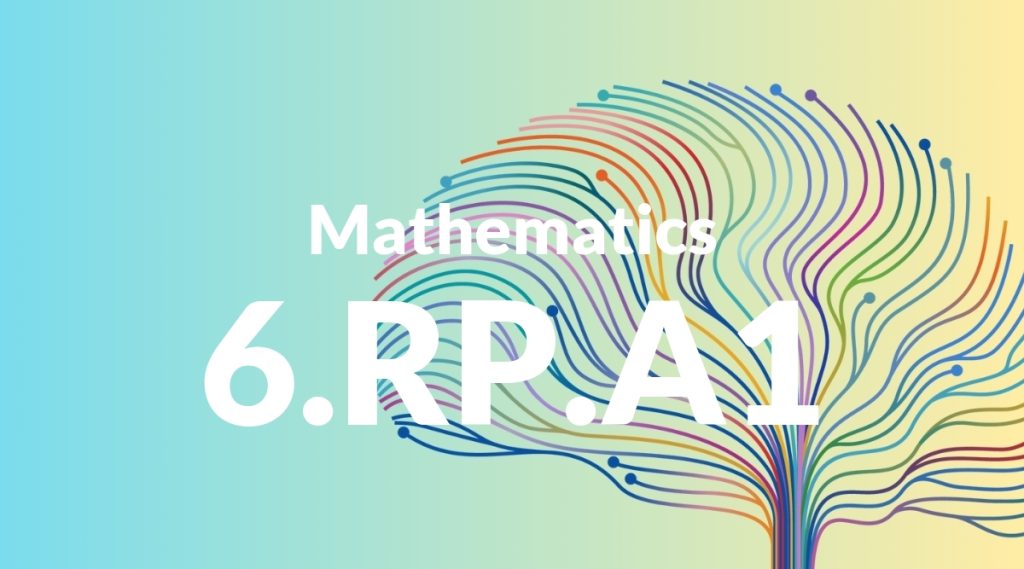Standard: 6.RP.A1 – Understand the concept of a ratio and use ratio language to describe a ratio relationship between two quantities. For example, “The ratio of wings to beaks in the bird house at the zoo was 2:1, because for every 2 wings there was 1 beak.” “For every vote candidate A received, candidate C received nearly three votes.”
Grade level: Grade 6
Subject: Mathematics
Domain: Ratios & Proportional Relationships
Teacher Overview
This standard focuses on helping students understand and describe ratios, which are fundamental in various mathematical and real-world contexts. Mastery of this concept is crucial as it lays the groundwork for more advanced topics such as proportions, rates, and algebraic reasoning. Students should be comfortable with multiplication, division, and basic fraction concepts. They should also be able to compare quantities and understand the idea of part-to-whole relationships.
By mastering this standard, students will be prepared to tackle problems involving unit rates and proportional relationships, which are essential for understanding more complex mathematical concepts and applications.
Common Misconception 1
A common misconception is that the order of numbers in a ratio does not matter. For example, students might think that the ratio 2:3 is the same as 3:2, which is incorrect because the order of quantities is significant in ratio relationships.
Intervention 1
To address this, use visual aids such as ratio tables or diagrams to clearly show the difference. Engage students in activities that require them to create and interpret ratios in various orders and contexts.
Common Misconception 2
Another misconception is that ratios can only be represented with whole numbers. Students might struggle to see that ratios can include fractions and decimals.
Intervention 2
Introduce ratios with fractions and decimals through real-world examples, such as mixing paint colors or recipes, to help students understand that ratios can involve any type of number.
Prerequisite Knowledge
Students should have a basic understanding of multiplication and division, as well as the ability to compare quantities and understand fractions.
Subsequent Knowledge
After mastering this standard, students will be able to solve problems involving unit rates, understand proportional relationships, and apply these concepts to real-world situations.
Instructional Activities
- Create a visual ratio table to compare different quantities
- Use manipulatives to physically represent ratios
- Solve word problems involving real-world ratios
- Engage in group activities to find and discuss ratios in the classroom
- Conduct experiments to collect data and calculate ratios




